The cost to install wallpaper varies depending on the wallpaper type, material, labor, and more. Generally, it can cost you anywhere from $35 to $300 per roll, including the materials and labor.
Each roll of wallpaper can usually cover 27 to 30 square feet of wall. A 70-square-foot wall can cost you $90 to $700, depending on the wallpaper you’ll use.
To get a better estimate for your house or building, here’s a more in-depth discussion of the factors that can affect the installation cost of wallpapers.
What factors affect the cost of installing wallpapers?
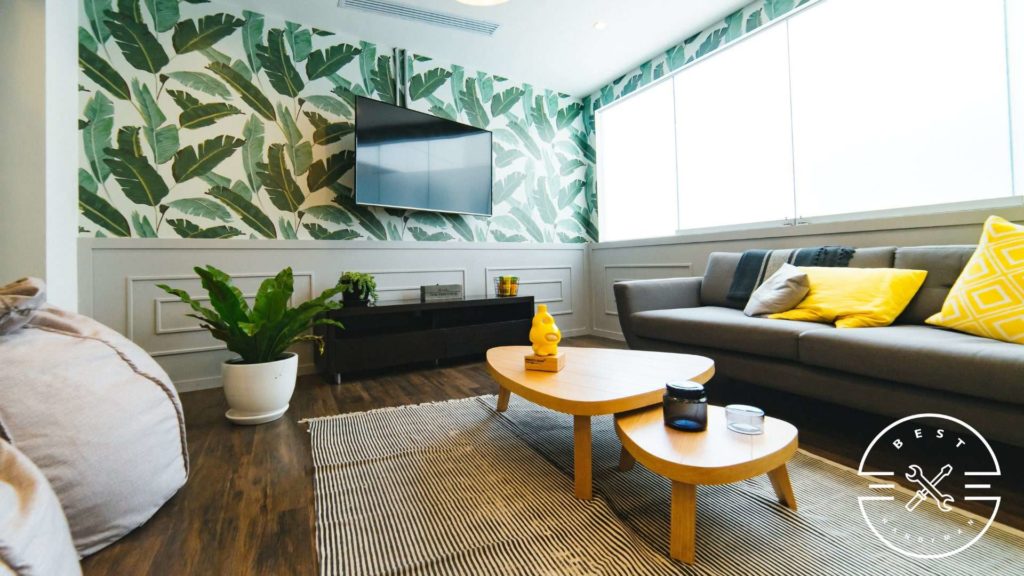
The most common factors that can affect wallpaper cost include room type, wall size, wallpaper type, wallpaper material, location of the property, and the wall preparation needed.
Room Type and Size
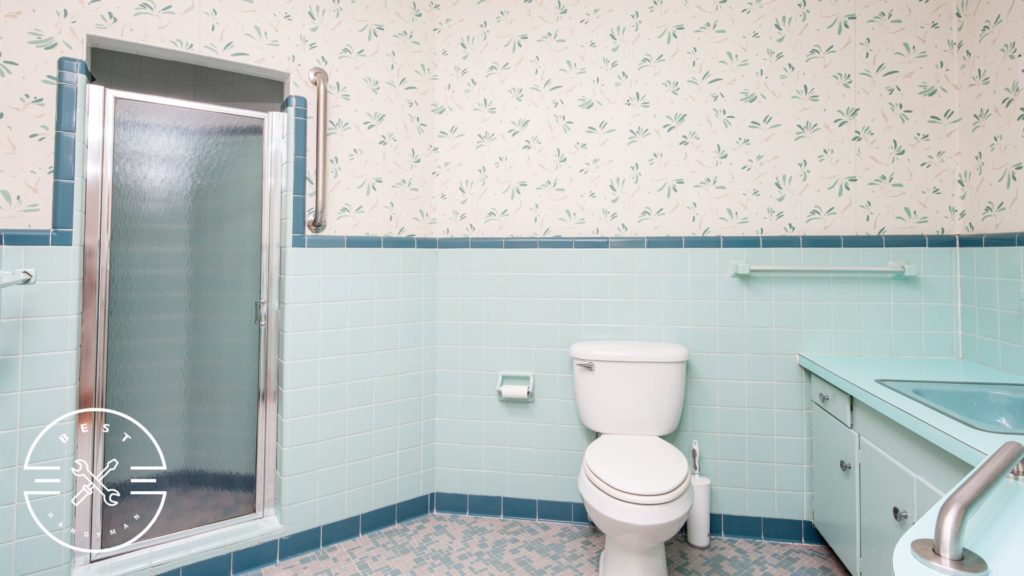
Wallpapers typically range from $4 to $10 per foot. However, different rooms have specific needs that can impact the cost of wallpaper installation.
Bathrooms and kitchens need wallpapers that can withstand moisture or be easily cleaned because of the high levels of moisture and humidity in them. These types of wallpapers, like vinyl, are usually more expensive than paper ones.
Moisture-resistant wallpapers like vinyl are usually more expensive than standard paper wallpapers.
On the other hand, bedrooms and living rooms are fine with just standard paper wallpapers. Hence, the material cost per foot is generally lower than in bathrooms and kitchens.
Wallpaper Type
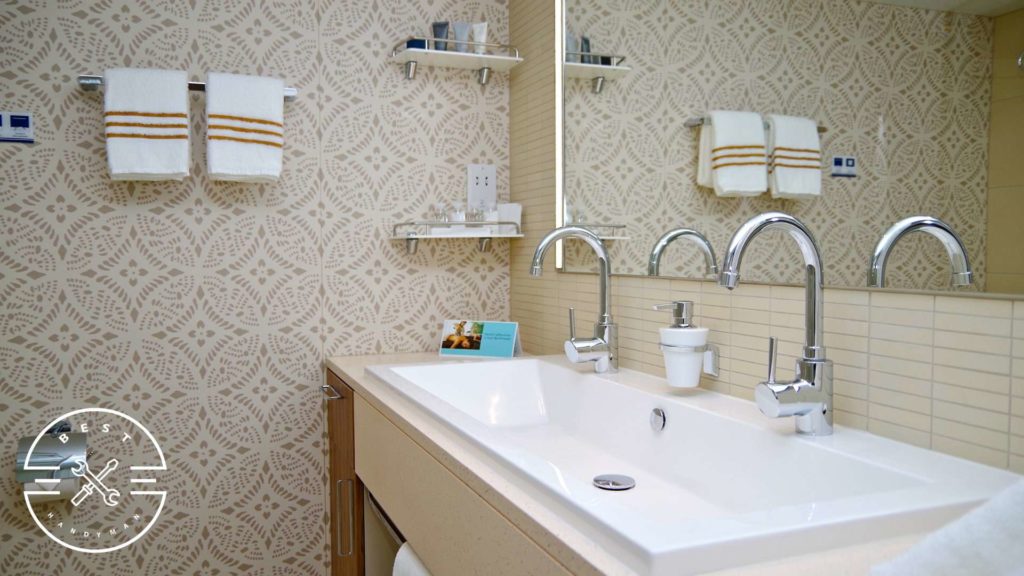
There are different types of wallpaper that you can choose from. Each type comes with their own features that can significantly affect the total cost of your project.
Peel-and-Stick
Peel-and-stick wallpapers are among the ideal choices for DIY enthusiasts. They come with an adhesive already applied to the back, eliminating the need for paste or water during installation.
You only need to peel the paper backing to reveal the sticky part and apply it directly to the wall. If you happen to make any error, you can simply remove the wallpaper without causing any harm to either the wallpaper itself or the wall underneath.
These are usually a lot cheaper than other types of wallpaper, costing anywhere between $20 to $45 per roll.
Prepasted
Prepasted wallpapers are like peel-and-stick wallpapers that come with built-in adhesive on the back. The main difference is you have to wet the adhesive on the prepasted wallpaper to be able to use it.
After wetting the wallpaper, you can position it on the wall, smooth out any air bubbles or wrinkles, and trim the excess. You can also reposition it during installation if you make some mistakes.
Prepasted wallpapers cost $20 to $80 per roll, depending on the design, roll size, and brand.
Liquid
Liquid is a unique type of wallpaper that’s very different from the traditional wallpapers many know. Instead of sheets or rolls of paper or fabric, liquid wallpaper is applied directly to the wall surface as a wet paste or mixture.
The liquid will form a textured or embossed finish as it dries up. Some liquid wallpapers can have a smooth or metallic finish, depending on your liking.
One advantage of liquid wallpaper is that it’s relatively easy to repair. If a small section gets damaged or stained, you can patch or touch up the affected area without redoing the entire wall.
Liquid wallpapers usually cost $25 to $50 per pack. Each pack can typically cover the same amount as a single roll of traditional paper or fabric wallpaper.
Printed
Printed wallpapers offer design flexibility. You have the freedom to select any design, pattern, or image that will complement the room’s interior as long as it can be printed digitally or screen printed on the surface of the material.
Typically, these wallpapers are less durable compared to other types. But you can improve their durability by coating them with decorator varnish.
The price range for printed wallpapers varies between $30 and $50 per roll, depending on factors such as the design and material used.
Textured
Textured wallpaper’s charm lies in the depth, dimension, and tactile effects it adds to walls. Unlike smooth, flat wallpapers, textured wallpapers have a subtle, uniform, and consistent tactile effect.
Installation of these wallpapers is usually just the same as other types. But they’re a bit harder to remove than others since the texture is deeply embossed in the walls.
These wallpapers are a bit on the expensive price point, costing around $50 to $125 per roll.
Embossed
Like textured, embossed wallpapers add a tactile effect on the room they’re used. However, embossed wallpapers tend to have intricate designs and raised patterns that stand out prominently on the wall.
They don’t provide the same uniform and evenly distributed tactile effect of textured wallpapers. This is because they usually emboss flat wallpapers like vinyl rather than using fibers, fabric, and other textured materials.
The cost of wallpaper can vary depending on factors such as the design, brand, and material used. Typically, you can anticipate paying around $70 to $105 per roll for this type of wallpaper.
Mylar
Mylar wallpapers are one of the most expensive types of wallpapers you can choose. They cost about $80 to $230 per roll, so they’re not commonly used to cover an entire room.
They’re also quite challenging to install as they crease easily. The wall also needs to be primed properly, as the metallic finish can highlight wall imperfections.
Mylar wallpapers have a shiny, mirror-like finish that helps bounce light and make the room look more spacious. They’re mostly used in high-traffic areas since they can be washed without damaging the print.
Wallpaper Material
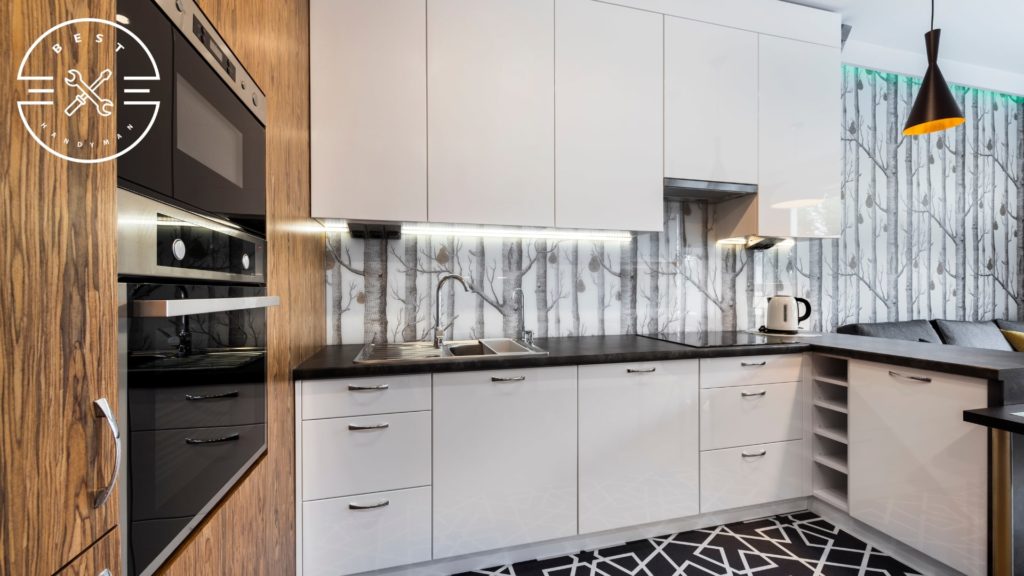
Various wallpaper material options are available, including traditional vinyl wallpaper, textile wallpaper, and specialty wallpapers like grasscloth or bamboo. The choice of materials you make can have an influence on the cost of the project.
Paper
One of the most affordable options for wallpaper materials is typically paper wallpaper. Depending on the brand and design, a roll often only costs $18 to $40.
It’s also quite easy to install and is a common choice for DIY enthusiasts. Even if you decide to hire someone for installation, the overall expenses are generally lower compared to types of wallpaper materials since they’re easy to install.
Paper wallpapers are commonly used in bedrooms, living rooms, and hallways. They’re not recommended for bathrooms and kitchens as they’re not moisture-resistant.
Vinyl
Vinyl wallpapers are a great choice for those who want moisture-resistant wallpapers but don’t want to splurge a lot. These are more expensive than paper wallpapers, but they’re cheaper than other alternatives, so it’s the best choice you have.
These wallpapers usually cost $60 to $80 per roll, excluding labor. These are DIY-friendly materials, so labor costs shouldn’t be that high.
These can withstand exposure to moisture and are less likely to warp or peel when exposed to humidity. They can also withstand scrubbing and cleaning without easily getting damaged.
Foil
Foil wallpapers are known for their reflectivity, which gives the room a luminous effect. They come in different metallic finishes, including gold, silver, bronze, and more.
Foil wallpapers may feature a range of patterns, including geometric designs, abstract patterns, and textured effects. Some foil wallpapers have embossed patterns that make the room look extra luxurious.
Foil wallpapers are generally more expensive than standard paper wallpapers due to the cost of the metallic foil material and their specialized appearance. They cost about $75 to $95 per roll, excluding labor.
Installation for these wallpapers is also much more complicated than vinyl and paper because of how thin foil wallpapers are.
Fabric
Fabric wallpapers are made by laminating real fabric onto a paper or non-woven backing. The fabric layer can consist of various textiles, including silk, linen, cotton, and more.
These wallpapers are often used if you want a textured and luxurious covering for your walls. They can feature various patterns and designs, from solid colors and subtle weaves to intricate patterns and floral motifs.
Fabric wallpapers are generally more delicate than other wallpaper types. Cleaning should be done carefully, using a soft brush or gentle vacuum attachment to remove dust and dirt.
These are usually on the more expensive side of wallpapers as they can be difficult to manufacture. If you want this material, expect to pay around $90 to $160 per roll for the wallpaper alone.
Grasscloth
Grasscloth wallpapers are made from natural materials, primarily grass fibers like jute, sisal, hemp, and seagrass. The grass fibers are typically handwoven or laminated onto a paper backing, giving the wallpaper a tactile, 3D texture.
These wallpapers are often used as an accent wall or in specific areas of a room to create a focal point. They are quite expensive, so covering an entire room with them can be costly.
They generally cost anywhere between $90 and $140 per roll, which is just around the same price point as fabric wallpapers.
Fiberglass
Fiberglass wallpapers are best for commercial buildings and areas with high traffic because of their durability. Their expected lifespan is 30 years, making them one of the most practical choices.
They’re resistant to wear and tear and can withstand moisture and humidity. They’re also fire resistant, an essential feature for wallpapers used in commercial buildings.
Fiberglass wallpapers are quite expensive, costing $105 to $175 per roll. However, their long lifespan and durability make them great investments.
Velvet
Velvet is a luxurious, high-end wallpaper material known for its soft, plush, and tactile texture. Wallpapers made of velvet come in a wide range of colors, from rich and deep hues to subtle and muted tones.
Installing velvet wallpaper can be quite challenging due to its delicate texture. Hiring professional installers is recommended to ensure a seamless and satisfying result.
Velvet wallpapers are generally expensive because of the cost of velvet material and their luxurious look. Expect to get this material for around $175 to $245 per roll.
Bamboo
Bamboo is one of the most expensive materials for wallpapers, costing $210 to $280 per roll. The bamboo strips used to make the wallpapers and the craftsmanship involved in the production drive up the cost of these wallpapers.
These wallpapers have a rustic and organic look, making them a popular choice for those who want a natural and relaxed atmosphere in the room.
Wallpapers made of bamboo are generally not DIY-friendly, so you’ll have to hire a professional installer. Applying them on your own can ruin the wallpapers and result in an uneven application.
Wall Preparation
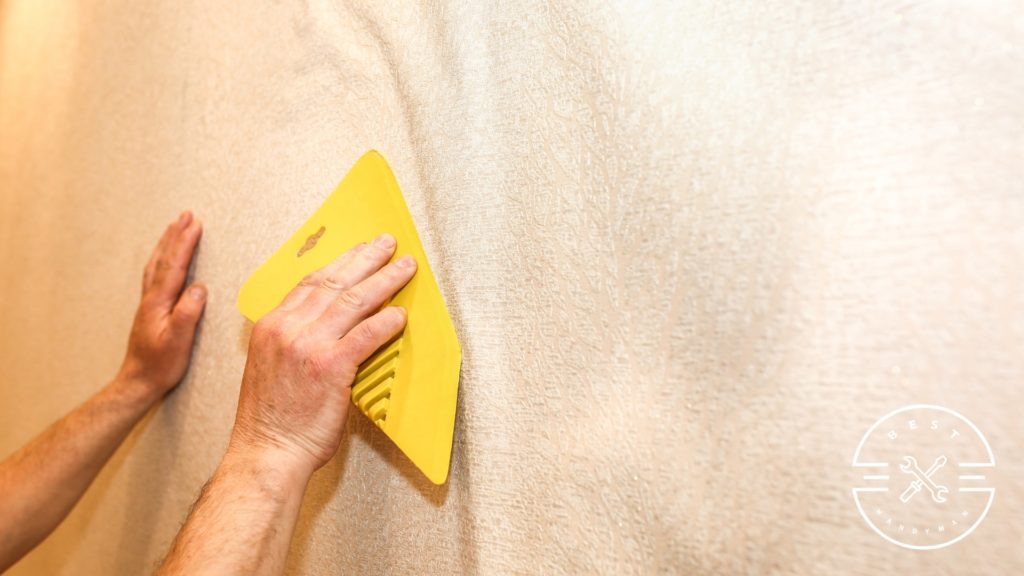
Some preparations often done before the wallpapers are installed include removing existing wallpapers, cleaning, priming, and repairing holes, bumps, and scratches.
The cost of hiring a professional to remove the current wallpaper can range from $0.50 to $1.50 per square foot. But if you do it yourself, the materials for the entire room will only run you $50 to $100.
The price for other preparations like filling in holes, smoothing bumps, and cleaning the walls may vary between $25 to $125 for the whole room.
Location
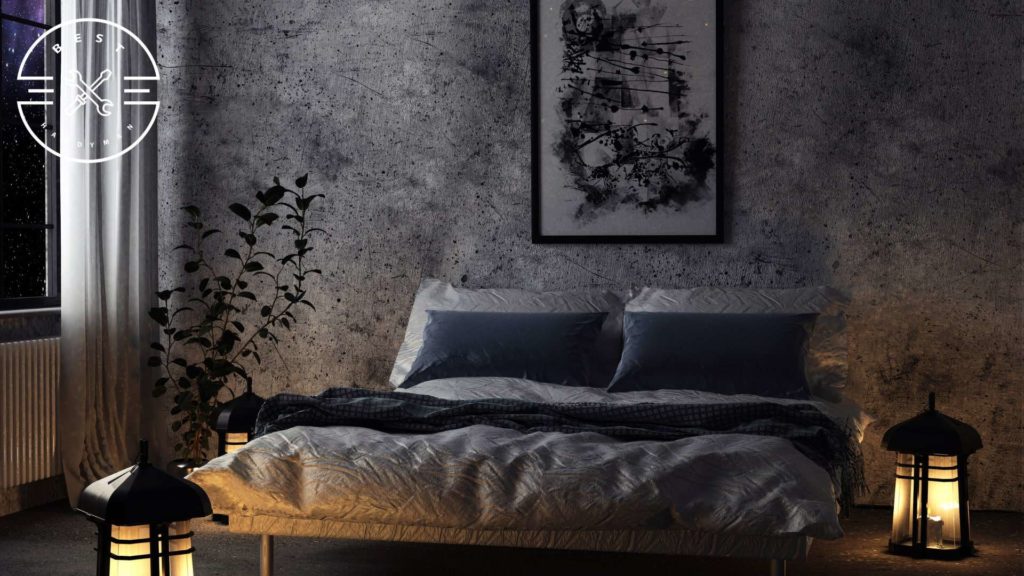
The price of wallpaper installation can vary based on your location, mainly because labor costs differ between places. Hiring contractors from urban areas with high costs of living will cost more than hiring contractors from rural places.
If you hire someone from a distant location, their rates will likely cover their travel expenses, driving up the total labor cost.
Some materials and wallpaper types may also not be available in some states. Bringing in the materials from a different place can increase the cost per roll of the wallpapers.
How much does it cost to hire professional wallpaper installers?
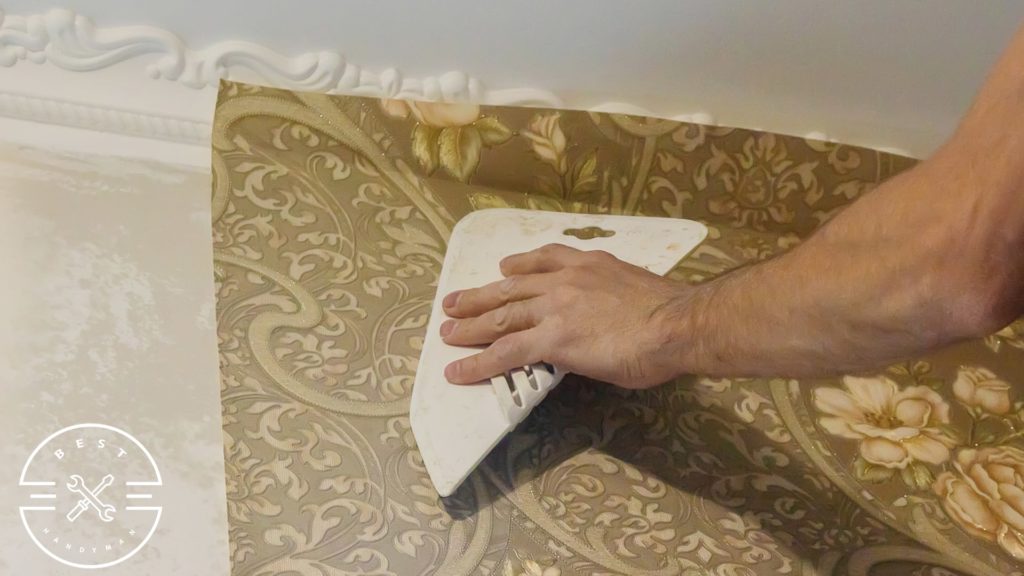
Professional wallpaper installers may charge per foot, roll, or hour. Generally, hiring a professional can cost you $1 to $7 per square foot, $25 to $35 per roll, or $25 to $80 per hour for labor alone.
These price ranges can increase if the wall needs to be repaired or if the type of wallpaper you use is challenging to install.
How much does it cost to do a DIY wallpaper installation?
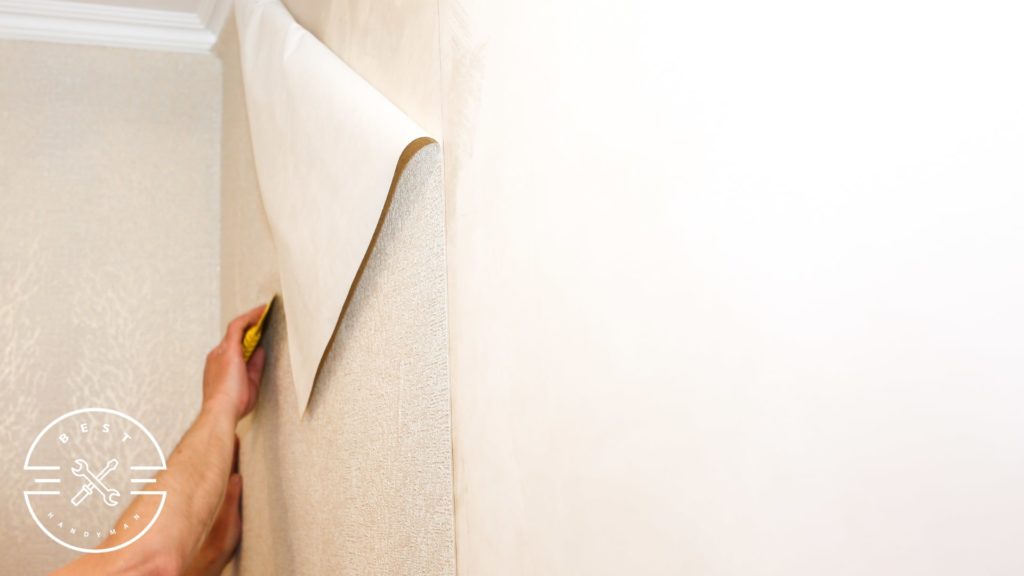
For do-it-yourself wallpaper installation, you’ll only need to pay for the wallpaper and wall preparation, so it will be significantly smaller.
You can find wallpaper priced as low as $4 per square foot. Depending on the style of wallpaper and the amount of wall preparation necessary, you may spend about $10 to over $100 per square foot, including all necessary supplies and tools.
It’s worth noting, though, that some wallpaper materials and types are not DIY-friendly, like foil and bamboo. Installing them by yourself without enough experience can cost you more as you’ll likely need to hire a professional to redo the work.
How do you save on wallpaper installation costs?
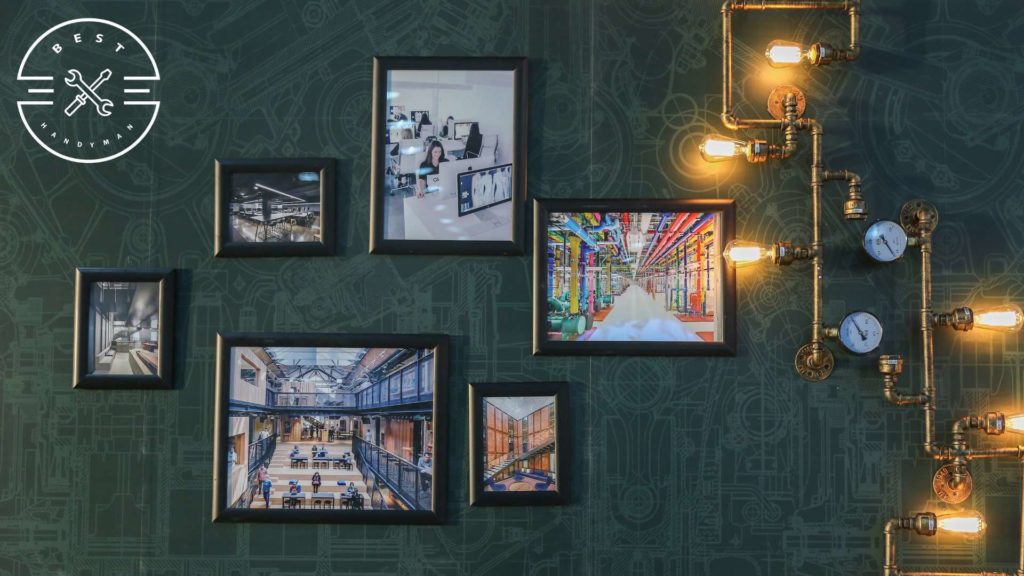
Wallpaper installation, especially for big rooms, can be quite an investment. However, there are measures you can take to reduce the expenses without sacrificing the quality of the wallpaper job.
- Compare prices for different retailers
Comparing prices from different merchants is one of the most basic cost-saving strategies that can be useful for any project, not just wallpaper installation. By doing so, you can find the best price on the same kind of wallpaper.
- Choose more affordable wallpapers
There are a lot of affordable wallpaper options out there that can provide you with your needs. Consider using paper wallpapers for bedrooms and hallways, as these are the most affordable options suitable for those areas.
- Use specialized wallpapers for accent walls only
If you really want to use specialized wallpapers like velvet or bamboo, just use them for accent walls instead of covering the room with them. This simple technique will help you save a lot of dollars.
- Install the wallpapers on your own
If you’re quite handy and have time on your hands, you can try installing the wallpapers on your own to save up on labor costs. Some types of wallpapers, like peel-and-stick, are pretty easy to install, so you don’t really need to hire professionals.
- Minimize the work needed on wall preparation
If you can’t install the wallpapers on your own and need to hire someone to install them, you can save money by doing some of the wall preparation needed. By doing this, you can lower your labor costs.




